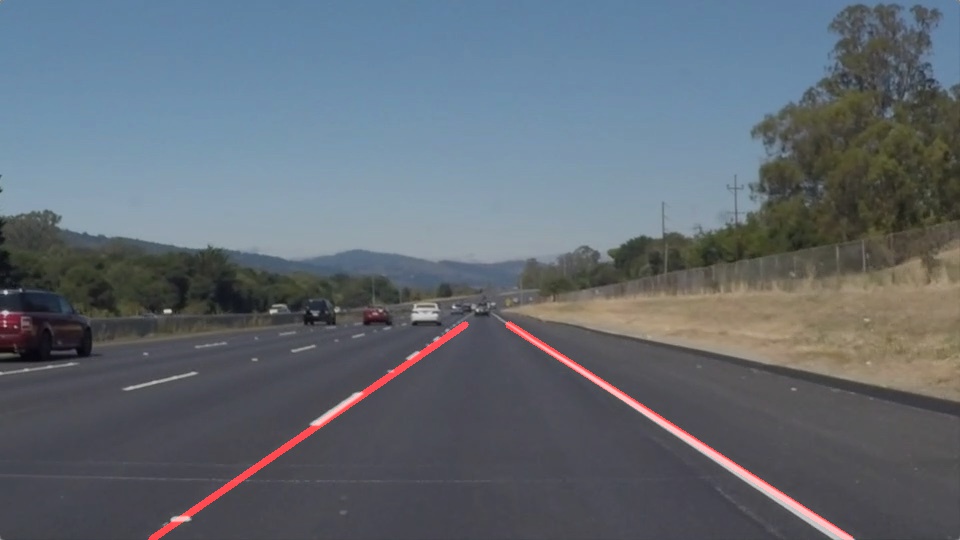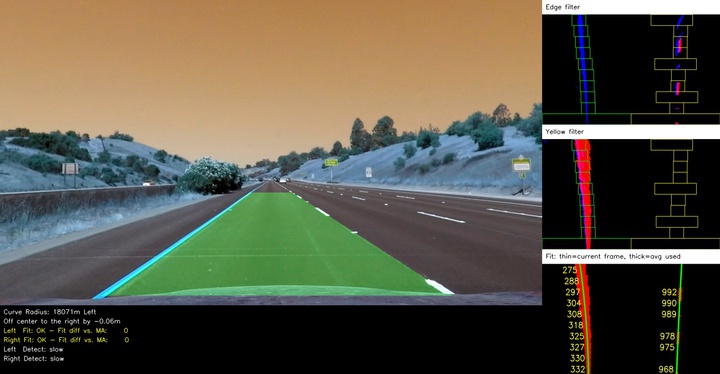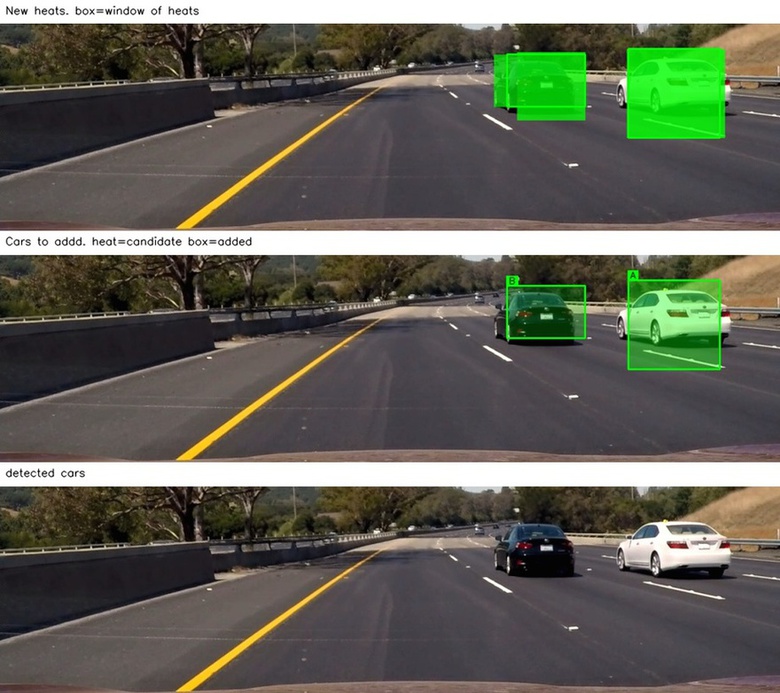Self Driving Car Coursework
Part 1 - Lane Lines Detection
The goal of part-1 of the coursework is to piece together a pipeline to detect the line segments in the image, then average/extrapolate them and draw them onto the image for display.
Steps:
- Read in image
- Generate Canny image output from grayscale of image
- Define a Region of Interest and Mask out area outside of it
- Use cv2.HoughLinesP() to derive line segment coordinates from step 2
- Calculate the left and right line coordinates from step 3 via averaging weighted slopes and y-intercepts, filtering out too short segments and filtering out slope and y-intercept outliers
- Draw the two lane lines from step 4.

- Produce Output Details, discussion, and images and video output in the Lane lines Detection repo.
Part 2 - Traffic Sign Classifier
Goals for Part 2:
- Design of the Neural Network architecture
- Explore and visualize the data set
- Train, optimize, and test a model architecture
- Try various preprocessing techniques
- Data Augmentation/Generation
- Use the model to make predictions on new images
- Analyze the softmax probabilities of the new images
- Summarize the results
Additional Work to test the model:
Five additional images were used for further testing and analysis:

These images were found in Google Image search. Since the test images are already German traffic signs the training hasn't seen before, I decided to find US traffic sign images to see how the predictions will be like. The images have been chosen such that:
2 of the 5 (No Passing and Road Work) are in the training set's 43 classes. 1 of the 5 (Yield) is in the 43 classes, but is slightly different as stated above. 2 of the 5 (No Pedestrian, No Exit) are not in the training set.
Details, discussion, analysis and images in the Traffic Sign Classifier repo.
Part 3 - Behavioral Cloning
To train a computer to drive itself, images from a camera attached to the car and its corresponding steering and other outputs can be feed to a convolutional neural network to learn its own outputs when it encounters similar data. This technique is called behavioral cloning.
The goals / steps of this project are the following:
- Use the simulator to collect data of good driving behavior
- Build, a convolution neural network in Keras that predicts steering angles from images
- Train and validate the model with a training and validation set
- Test that the model successfully drives around track one without leaving the road
Details, discussion and analysis in the Behavioral Cloning repo.
Part 4 - Advanced Lane Lines Detection
The goals of this project are as follows:
- Compute the camera calibration matrix and distortion coefficients given a set of chessboard images
- Apply a distortion correction to raw images
- Use color transforms, gradients, etc., to create a thresholded binary image
- Apply a perspective transform to rectify binary image ("birds-eye view")
- Detect lane pixels and fit to find the lane boundary
- Determine the curvature of the lane and vehicle position with respect to center
- Warp the detected lane boundaries back onto the original image
- Output visual display of the lane boundaries and numerical estimation of lane curvature and vehicle position
Sample pipeline output image with lane lines identified:

Details, discussion, analysis, images and videos in the Advanced Lane Lines Detection repo.
Part 5 - Vehicle Detection
The goals of this project are as follows:
- Perform a Histogram of Oriented Gradients (HOG) feature extraction on a labeled training set of images and train a classifier Linear SVM classifier
- Explore other features in additional to HOG
- Implement a sliding-window technique and use your trained classifier to search for vehicles in images
- Run pipeline on a video stream and create a heat map of recurring detections frame by frame to reject outliers and follow detected vehicles
- Estimate a bounding box for vehicles detected
Sample pipeline output image with vehicles identified:

Details, discussion, analysis, images and videos in the Vehicle Detection repo.